 |
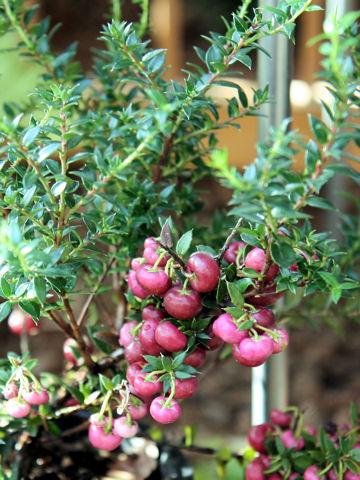

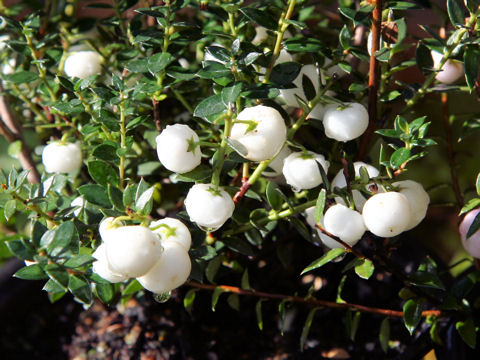

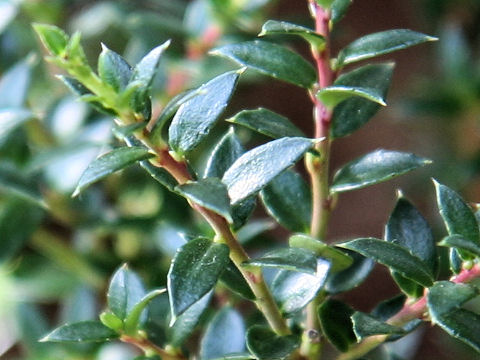

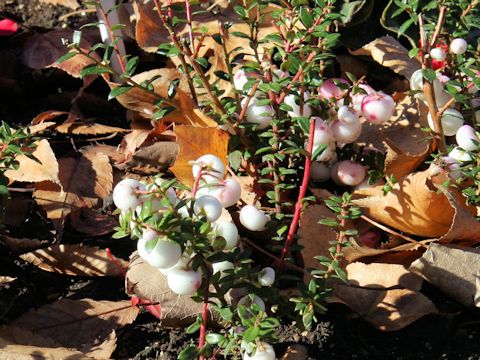

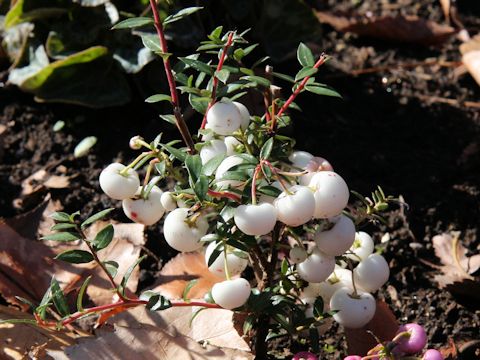

|

|
ìAJÌ`ì©çA[`ìɪzµÄ¢Ü·BiLNui®âh~X®ÈÇ̼èCÌ é¾é¢Lt÷Ñàɶ¦A³ÍPDQ`PDT[gÉÈèÜ·BtÍ`©çâj`ÅݶµAæ[ÉÍs¢ÆÉÍe¢ª èÜ·BT©çU²ëA¬}Ìãɬ³Èx`ÌF©çsNFÌÔð穹ܷBÊÀÍG
`ÌtÊÅFâsNFAÔFA¡FÈÇÉnµAH©ç~ÜÅ¢ĢܷB
|

|
ccWÈylbeBA®ÌíάáØÅAw¼Í Pernettya mucronataBp¼Í Prickly heathB
|

|
The Prickly heath (Pernettya mucronata) belongs to Ericaceae (the Heath family). It is an evergreen shrub that is distributed to south Chile and south Argentina. This shrub grows in the open wet Nothfagus (Sonthern beech) and Drimys broad-leaved forests, and can reach 1.2-1.5 m in height. Leaves are alternate, ovate to lanceolate with sharp spine at the tip and very distant teeth along the edge. From May to June, small bell-shaped white to pink flowers are seen on the upper twigs. Fruits are oblate berries and ripen white, pink, red or lilac, persist through fall and winter.
|

|
[ãEP`Q] ºÉ§Á¼suºÉ§t[Z^[vÉÄA2006N1205úBeB
[REº] éʧì¬u uËXÑövÉÄA2010N1205úBeB
|






